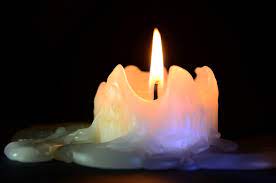Understanding the Transformation: Does Wax Truly Evaporate Within a Candle’s Flame?
The Science Behind Candle Burning
The burning of a candle involves a process called combustion, wherein the heat of the flame melts the wax near the wick. This liquid wax is drawn up the wick, and the heat of the flame vaporizes the liquid wax, turning it into a hot gas.
The Role of Wax in a Candle
In the context of a candle, the wax serves as fuel for the flame. It doesn’t evaporate in the same manner as water because it undergoes a chemical reaction. As the wax becomes a gas, it reacts with oxygen in the air to create heat, light, water vapor, and carbon dioxide. The heat generated from this reaction is what keeps the candle flame burning.
The Evaporation of Wax
Wax does not evaporate in a traditional sense, as it involves a chemical process rather than simply turning from liquid to vapor. However, wax can be said to evaporate in the sense that it undergoes a chemical transformation and disperses into gas form. The concept if you know behind if wax warmers catch on fire, can clear your curiosity as well.
The Duration of a Candle Flame
The size and shape of the candle, as well as environmental factors such as wind speed, can influence the duration of a candle flame. However, the chemical reaction between wax and oxygen is largely responsible for how long a candle will burn. As more wax is consumed by the flame, less wax remains to fuel the reaction. Eventually, there will not be enough wax to keep the flame burning and it will extinguish itself.
Duration do also depend on the type of wax melts warmer used, while the best scented wax warmer are more durable as compare to other wax melts of same type.
The Nature of Candle Flames
Candle flames are comprised of several distinct layers: a blue inner core that is hottest and burns the most efficiently; an intermediate layer called the luminous zone which glows brightly; and an outer zone where combustion is incomplete. The size and color of these layers can change depending on the type of wax used to make the candle, as well as environmental factors such as air movement or drafts.
Conclusion
Wax does not evaporate in a traditional sense; however, it undergoes a chemical transformation that disperses it into gas form. This process is what fuels the candle flame and is largely responsible for how long it will burn. The size and shape of the candle, as well as environmental factors such as wind speed or drafts, can also influence the duration of a candle flame. By understanding the science behind burning candles, we can get the most out of our candle-burning experiences.
